I often get asked about Simpson Strong-Tie R&D projects. Since I can’t always talk about what new products we are working on, I thought I’d give you a sneak peek into where the magic happens. The Tye Gilb Research Laboratory is our R&D hub. Built in 2003 in Stockton, CA, the lab is named in memory of Tyrell (Tye) Gilb, a former professor of architecture and a wonderful man, who led our company’s research and development efforts for 35 years.
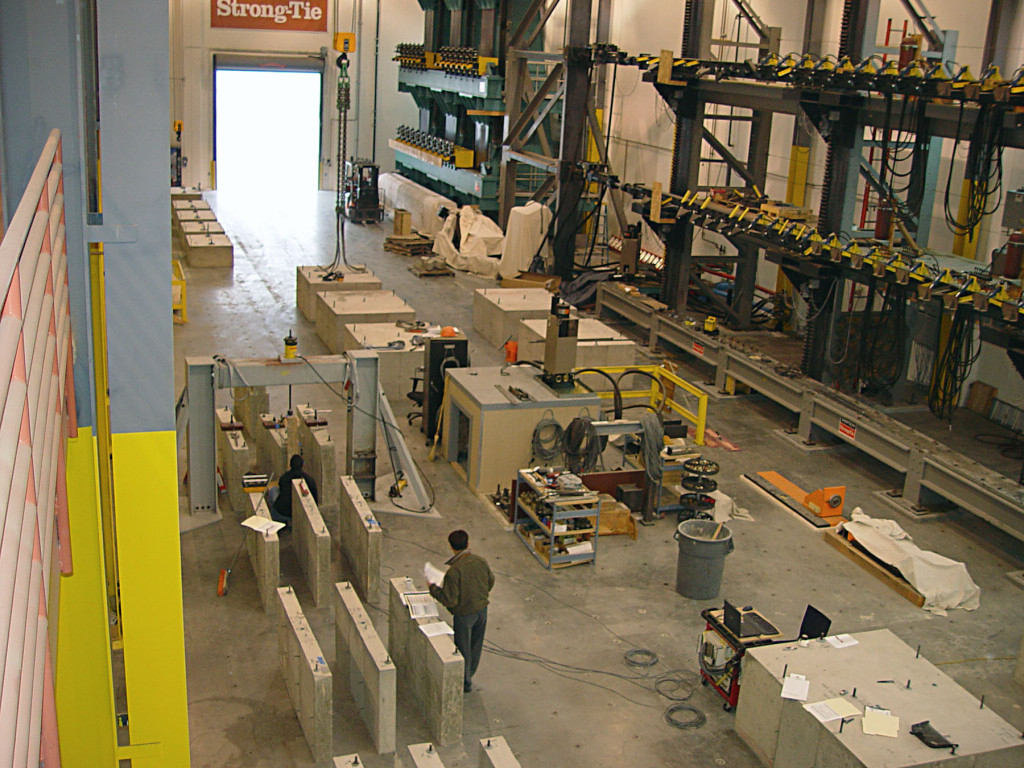
The 25,000 sq. ft. facility is built around 10,000 sq. ft. of reinforced “Strong-Floor,” to which all test equipment is secured. The Strong-Floor is three feet thick and designed to withstand concentrated loads of up to 300,000 pounds at any location. The Strong-Floor, basement walls and mat slab below are comprised of 10 million lbs. of concrete.
Why so much concrete? Two reasons. Providing the flexibility to apply large concentrated loads anywhere required a thick, heavily reinforced slab for design strength. In addition, when you accelerate a heavy test specimen through an earthquake simulation, the actuators need a large reaction mass to push against. If the reaction mass of the lab floor was not so large, cyclic tests could transmit vibrations through the rest of the building.
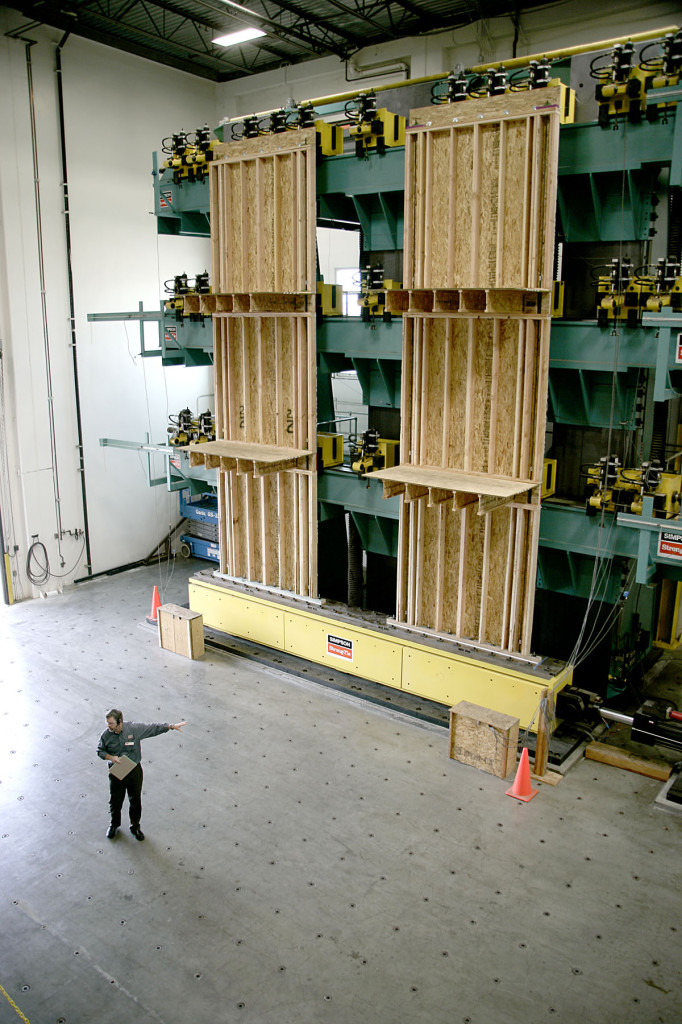
The centerpiece of the Tye Gilb lab is our one-of-a-kind uniaxial shake table, capable of testing full-scale wall assemblies up to three stories tall. The shake table enables us to test portions of a building rather than an entire structure.
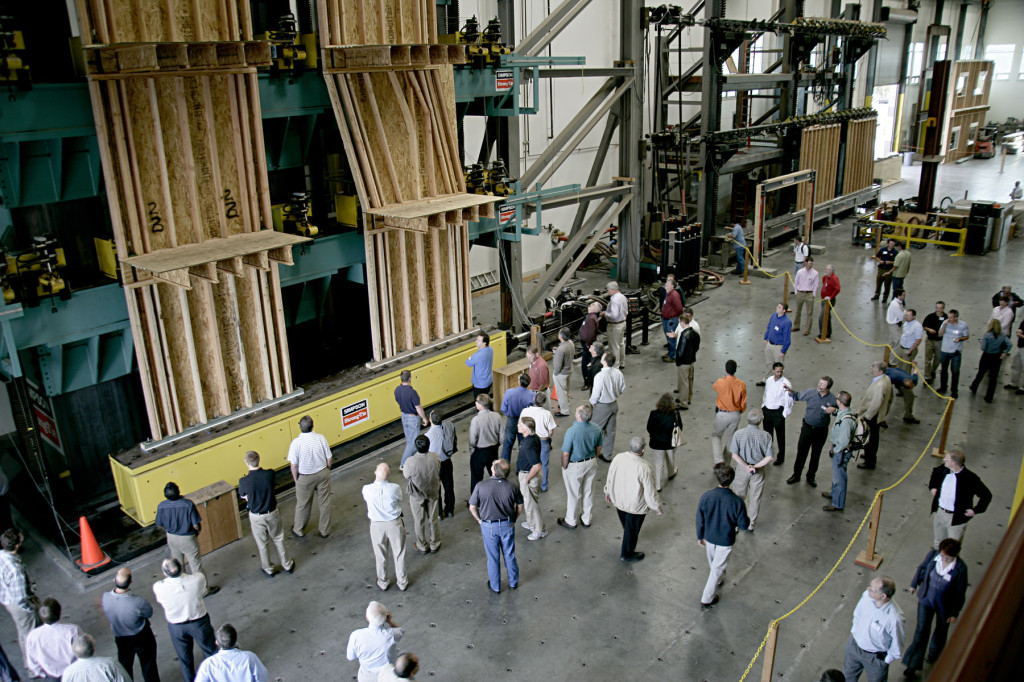
Using ground motion recordings from actual seismic events, the shake table, with stroke of 32 inches and an actuator speed of up to 70 inches/second, can test specimens with an inertial weight of up to 60,000 lbs. using some of the largest ground motions recorded to date.
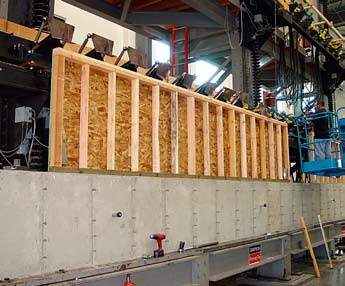
Located in the center of the lab and also capable of testing full-scale wall assemblies is a multi-story cyclic/static rig designed to test two-story wall assemblies up to 50 ft. long. The rig has vertical actuators and independently controlled lateral actuators at the top of each wall level. With this setup we can simulate both seismic and wind lateral loads as well as wind uplift pressures or gravity-induced down force. The rig allows us to test to current Code Acceptance Criteria for prefabricated wall and moment frame assemblies. Our newest edition is a vertical cyclic/static test rig with 200,000 lbs. of force capacity and +/- 5 inches of stroke. This rig is more suited for smaller test assemblies or testing individual components such as joist hangers, holdowns, or similar devices.
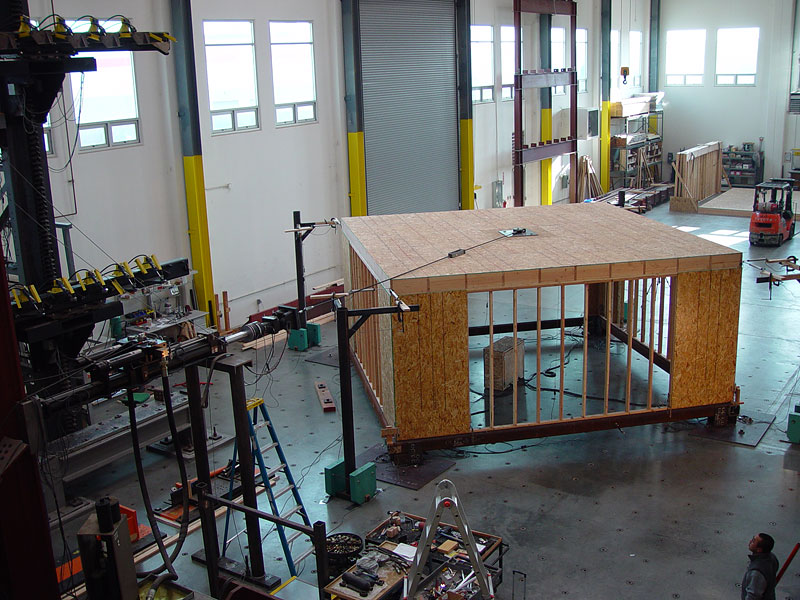
A general purpose test area is at the south end, serviced by a single lateral actuator similar to those in the two-story cyclic/static rig. This versatile area is capable of accommodating full-scale 3D test specimens or horizontally oriented wall assemblies of up to five stories high.
As you can see, the Tye Gilb Lab offers versatility and a unique set of abilities that enable us to develop and test an expanding variety of proprietary designs, as well as the opportunity to assist or participate in research projects pertaining to new and existing building practices around the globe. Check out some testing done at the lab in this video.
I hope you’ve enjoyed this glimpse into our lab. If you’ve had the chance to attend one of our events, I’d love to hear your impressions of the lab in the comments.
– Paul
What are your thoughts? Visit the blog and leave a comment!

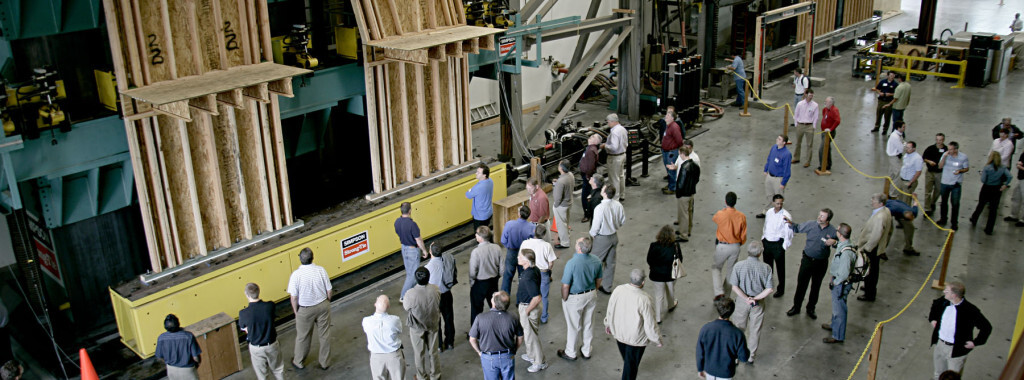

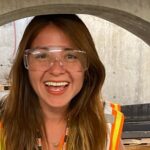

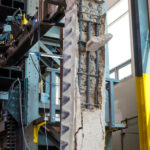
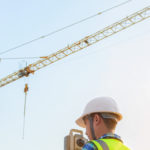
I have visited the facility twice and both times amazed. Thanks for all your efforts on R&D as these tests make better Codes and standards.
Sounds like an awesome facility. I’ve seen some good, practical research come out of it.